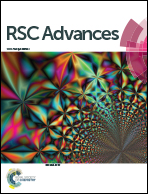Screening of facultative strains of high lipid producing microalgae for treating surfactant mediated municipal wastewater
Abstract
This study discusses a novel approach to simultaneously remove two types of hazardous chemicals, surfactants and nutrients, from municipal wastewater by culturing selected microalgae. A total of 76 strains of microalgae were separated from different sampling sites situated in the Island of Penang, Malaysia, using a 48-well tissue culture plate. Screening and acclimation procedures were performed to select facultative heterotrophic microalgae strains capable of growing in surfactant-mediated wastewater for simultaneous wastewater treatment and lipid production. Only eleven out of thirty-six facultative strains were demonstrated to be tolerant towards surfactant-mediated municipal wastewater (SMMW). The selected eleven strains were further characterized according to the rate of cell growth, biomass production, lipid accumulation and fatty acid profile. The six best strains, identified as Scenedesmus sp., Chlamydomonas sp., Chlorococcum humicola, Botryococcus braunii and two Chlorella sp., were chosen for further studies because of their ability to grow in surfactant mediated municipal wastewater (SMMW) with high growth rates (0.354–0.501 d−1) and their higher lipid accumulations (21.54–41.98% of dry biomass).


 Please wait while we load your content...
Please wait while we load your content...